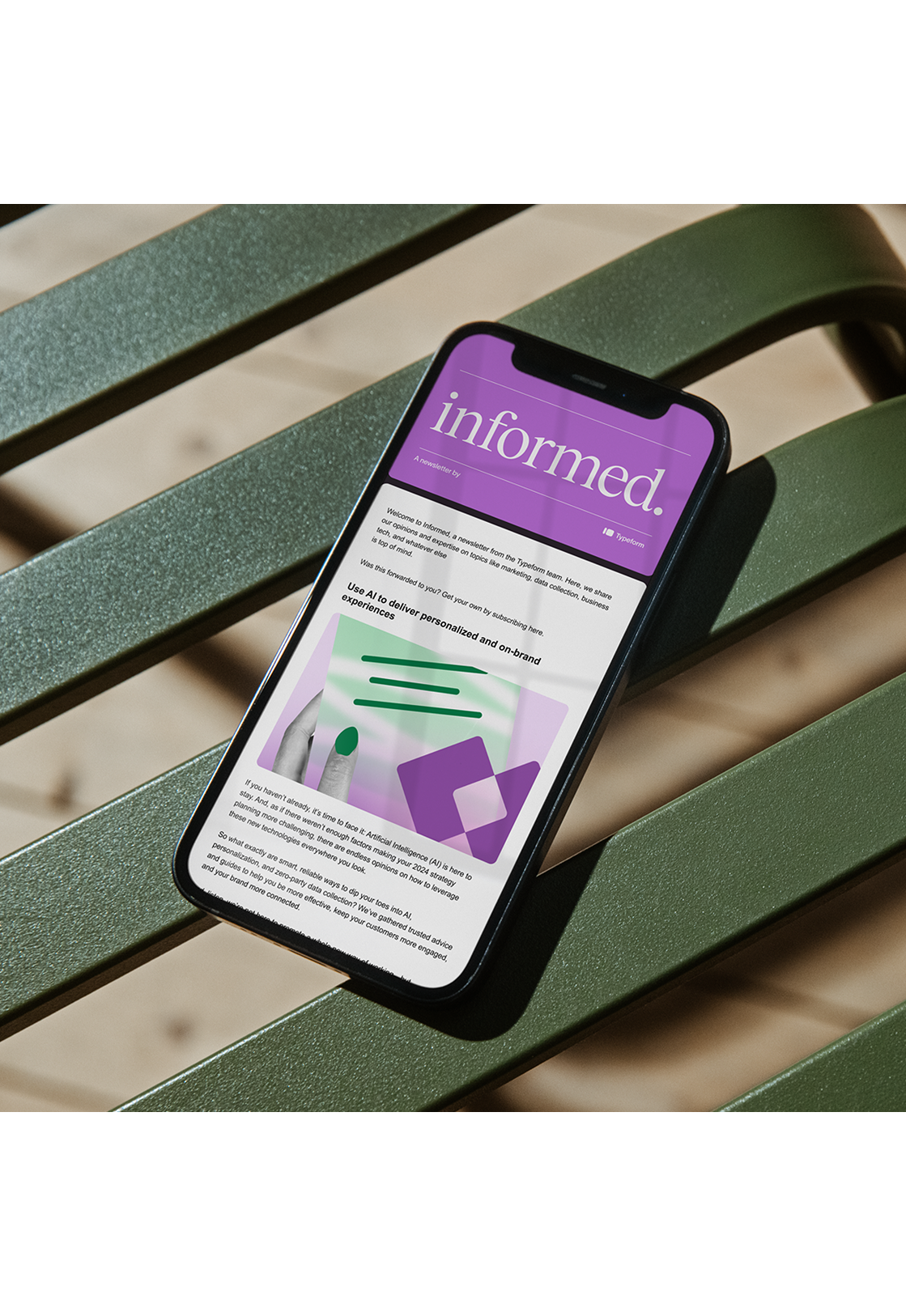How to run a pricing test (without breaking your business)
Pricing is one of the most important levers you can pull as a marketer. Here’s how to find your sweet spot.
4 MINS READ

What’s inside?
Getting your pricing right is like perfecting a recipe. Too little seasoning and it’s bland, too much and you’ve ruined the whole dish.
The key is in the balance. Except instead of salt, fat, acid, heat, you’re working with LTV, CVR, AOV, and the occasional SOS.
For growth marketers selling premium products, pricing is one of the most important levers you can pull to drive conversions. But change it too dramatically or inconsistently, and you risk confusing consumers, damaging your brand, or giving your CFO an ulcer.
Brian Krall, Senior Director of Growth Engineering at food tech company Tovala, has become a pricing Master Chef as he’s fine-tuned TovalaTavola’s offering over the last 7 years.
Tovala’s product is a package deal: consumers purchase their smart oven, initially launched at $400, then subscribe to fresh meal kits that the oven is designed to cook to perfection using QR scanning technology.
It’s an at-home cooking solution that’s less labor-intensive than traditional meal kits but healthier and more delicious than microwaved dino nuggets. (No knock on dino nuggets.)
.png)
Another differentiator: It also requires a higher upfront cost than options like Hello Fresh and Lean Cuisine, due to the initial hardware investment. As a result, Tovala customers had higher lifetime value than comparable e-commerce solutions—but also longer consideration periods and lower conversions.
So Brian and his team ran an experiment. Their goal was to uncover how to tweak pricing of their oven to drive more conversions, while maintaining their three nonnegotiables:
- The quality of their product could not decrease
- The unit economics still had to make sense
- Customers still had to be invested in the full solution (oven + meals), not just interested in buying cheap hardware
How to test pricing (without breaking everything)
1. Keep pricing consistent for individuals
The first law of price testing: Thou shalt not give one shopper two prices.
“Consumers are savvy enough to know if you’re changing pricing across platforms,” says Brian. “If they’re seeing different price points on mobile vs. desktop, that can really hose your test.”
Make sure your consumers are seeing the same pricing across channels, times of day, and among people who may be shopping together. If your customer’s office mate is seeing a different price than they are, at least one of them is going to be pretty unhappy.
Brian’s team found that state-level pricing tests offered a large enough population for them to get useful data about how different prices performed, while still maintaining a consistent experience for shoppers.
.png)
2. Use surveys to inform your pricing strategy
Surveys were a crucial tool for collecting information about Tovala’s customer consideration timelines. This gave Brian’s team a better understanding of how long they should run their tests.
The go-to post-purchase survey question is, “Where did you hear about us?” (Facebook, Instagram, Reddit, word of mouth, etc.)
Brian and his team ran with a different option: When did you first hear about us?
.png)
Understanding when customers first heard about Tovala (yesterday, vs. a week ago, vs. a month ago, etc.) revealed that their consideration period was longer than they thought, highlighting the need to use pricing tweaks and promotions to accelerate the buying process.
Fast forward, and the team has run virtually the same form for 7 years now, and “over 60% of people fill it out—much higher than I would have expected,” Brian reports.
The lesson: Leverage surveys to ask questions that reveal customer behavior patterns—not just attribution data.
.png)
3. Know where your floor is
When you’re thinking about lowering prices to boost conversions, you have to know where your floor is.
At some point, you hit a tipping point where either (A) your costs get untenable, and your whole business collapses or (B) you make your product much worse in an effort to cut costs… and then your whole business collapses.
But no pressure.
Too low a price point can also equate to lower commitment to your solution. “If we gave the oven away for free, we could move a lot of inventory,” Brian points out. “But then we wouldn’t get the same interest in meal subscriptions, because that wouldn’t be what people were paying for anymore.”
Tovala didn’t just want people to buy their oven; the hardware and the meal subscription were meant to be a package deal.
“When we initially sold the ovens at a $400 price point, our total volume of sales was lower, but those customers were very high-intent on ordering meals. The balance is in finding customers who want the full solution.”
To run informed tests, work with your finance and operations teams upfront to establish your absolute pricing boundaries before you start testing.
.png)
4. Don’t run tests you don’t believe in
It sounds like obvious advice, but we’ve all been guilty of saying “yes” to those easy projects, even if we don’t think they’ll pan out.
“It’s easy to set up something like a landing page with a 1-question quiz that you run for two weeks. But then you look at the results, and you say Wow, that had no impact. And that’s probably what you expected in the first place,” says Brian.
His team sets a higher bar for pricing tests, committed to only running experiments that they think will get meaningful results.
This sometimes means advocating for more complex and time-consuming experiments. “You have to socialize what you know the opportunity is,” says Brian. “Otherwise you can find yourself spinning your wheels on the lower-effort tests you don’t think will work.”
Spend time on your internal marketing to get people excited about what you’re excited about.
A 5x conversion rate—without lowering customer value
Informed by Brian’s experiment, Tovala was able to adjust its pricing in a way that, over time, has directionally improved its conversion rate 5x since they launched.
At the same time, they’ve kept prices high enough that lifetime customer value (and meal purchases) has remained high.
“As we’ve lowered the barrier to entry, and as we’ve better understood where the hangups are, we’ve learned we don’t always have to sell this product in that $300–$400 range,” says Brian.
.png)
He adds, “By being more aggressive in pricing and running frequent promotions, we’re making sure as many people try our product as possible.”
In the kitchen, you need the right ingredients, right technique, and right cooking time to make something amazing.
The same is true for price testing.
To pinpoint the right pricepoints for your business, you need the right ingredients (data to make informed decisions), the right techniques (rigorous testing methodology), and the patience to let your experiments finish baking before you draw conclusions.
There’s always the danger of getting burned. But when you get those things juuuust right, the results can be utterly delicious.
The takeaway
Ask me anything
Got a burning questions? Ask Brian directly in this typeform
Planning your next campaign?
Get tips on what to ask, how to frame it, and how to actually get people to respond.
Want real feedback?
Ask about subject lines, formats, or strategy. Brian’s here to help you make it work.

Join almost 50,000 marketers staying informed (for free)
Every week, we’ll share free insights on topics like data collection, marketing, and much more. So, are you ready for a good read?